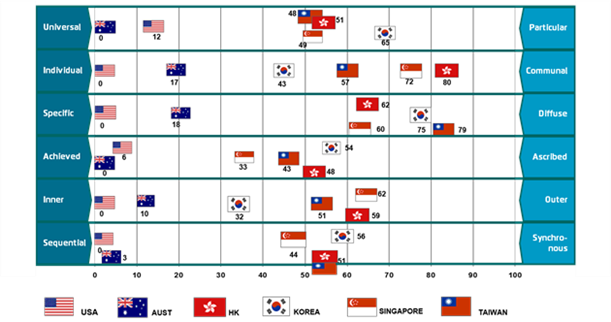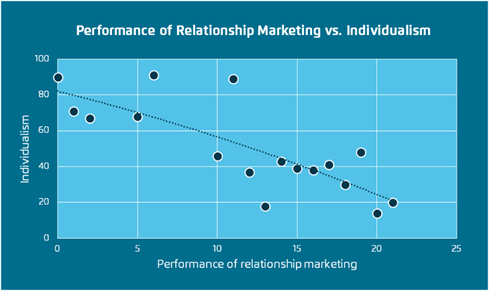The role of surprise and delight in your loyalty strategy

In an earlier ON POINT, we suggested that reducing customer dissatisfaction is far more important than increasing satisfaction, because dissatisfied customers take their business elsewhere and spread the bad word. We claimed that loyalty has as much to do with companies delivering on the basics than on ‘surprising and delighting’ their customers.
We found support from Don Peppers: “In one survey of nearly 100,000 US consumers, researchers found virtually no difference between the loyalty of those customers whose expectations are exceeded and those whose expectations are simply met.”
This led to an insightful observation from a reader, who questioned whether, if the same level of loyalty is achieved regardless of whether you exceed or meet expectations, this fundamentally destroys the concept of ‘surprise and delight’? “You’d be wasting money for no incremental loyalty...”, he noted.
As usual, this got us thinking, and we have three observations to make…
1. Surprise & Delight shouldn’t be about meeting or exceeding expectations
It may seem obvious to say so, but surprising a customer should be different from just exceeding their expectations – it’s not so much about delivering a better service than expected, but rather giving them something entirely unexpected.
Expectations can lead to entitlements, and research suggests1 that especially in competitive or commoditised industries, rewards programs can be undermined by this sense of entitlement. S&D offers a strategy to reward best customers without creating entitlement, and Kimpton Hotels’ Karma program provides an interesting example of an operator who has built S&D into their program.
In addition to circumventing issues of entitlement to rewards, S&D can work well as an apology. Recently, in response to long wait times at their call centre for Elite customers, Expedia sent $100 coupons to 90% of Elite members and did nothing for the other 10%. Those who didn’t receive the coupon decreased their spending by between 10% and 20%. But those who received the coupon actually increased spending by 5% to 6%, despite the poor customer experience2.
2. Intrinsic loyalty mechanism impact the effectiveness of Surprise & Delight
The effectiveness of ‘Surprise and Delight’ depends on what type of loyalty mechanism is in play between you and your customers.
What do we mean by ‘loyalty mechanism’? Recent Marketing Science Institute research3 points out that customers are loyal because of 3 intrinsic behavioural mechanisms:
- Habit: memory based loyalty, formed from consistent and automatic spending patterns, notably in customers whose usage does not change over time
- Dependence: rational loyalty driven by a cost-benefit analysis of switching costs, particularly in customers with a wide product holding
- Relationship: social and emotional loyalty, built on the trust that arises through multiple interactions typically in long-tenured customers
In an interesting study, the team looked at the impact of the provision of ‘special benefits and experiences that go beyond the core offering’, what we would call ‘surprise and delight’.
They tagged customers to each of the 3 mechanisms in a telco’s database, and identified 4 customer segments that responded differently to a surprise offering of 2 months’ free service – making a good guide to who should be the recipients of Surprise & Delight investment:
- Loyalists: have high levels of all 3 loyalty mechanisms. These customers are the best targets for S&D as the gift signals that you still care and are not taking their loyalty for granted. Churn dropped 5.1% following the offer, although there was no expansion of their business.
- Dependents: have a broad product holding with you but low ‘habit’ and ‘relationship’ levels. You need to be careful with these customers, defection rates did drop 5.3% but so did the likelihood of them expanding their business by 8.6%, perhaps because they were nervous to add to their dependence – so best to combine S&D with socially-oriented activities to build trust.
- Sleeping Dogs: these customers are mainly bound by ‘habit’. Be careful about waking these customers up with a gift as they may play (they expanded their business by 1.9%) or bite (defection increased 3.3% as well). Better to wait until ‘dependence’ and ‘relationship’ grow.
- Sceptics: these customers have low levels across all of the 3 loyalty mechanisms, so don’t engage! They viewed the offer with suspicion – perhaps assuming it was to compensate for an inferior product, and increased their churn by 5.8%.
The conclusion here is ironic… it looks like the effectiveness of Surprise & Delight depends on the extent to which your customers are already loyal!

3. It matters if your consumers are Americans!
Over a decade ago we ran a study that looked at the impact of cultural differences on the effectiveness of loyalty marketing in Asia Pacific. At the time, CRM was the hot management topic, direct from the USA, and our client was interested to determine if there were local sensitivities that could make their CRM investments more successful.
We first ranked our target cultures on a multi-dimensional scale developed in the 90s by researchers Trompenaars & Hampden-Turner:
(The scores are rankings of nations on each dimension)

To illustrate the dimensions:
- Universal vs. Particular: ‘Australians’ believe there are Universal Truths e.g. no-one is above the law, it applies universally; whereas ‘Koreans’ believe that the Particular circumstances need to be considered before rushing to judgement.
- Individual vs. Communal: ‘Americans’ hold the rights of the Individual paramount; whereas in Singapore & Hong Kong culture, Communal well-being is the most important.
The details of the dimensions are less important than the obvious difference between the Australian/USA cultures and the rest. At the time these differences highlighted a key difference in service treatments: Asian cultures valued *reliable service quality* much more highly than the Western cultures, where it was taken for granted so *personalisation* was the primary driver of loyalty even then.
This is clearly a point-in-time finding (it was put to good use) that has perhaps moderated in the intervening years. But it makes us wonder if there are still differences that we should consider as we plan customer loyalty strategies in Asia rather than Australia or North America.
A recent meta-study4 of Relationship Marketing that combined over 40,000 relationships across 144 studies, 29 countries and 6 continents’ used Hofstede’s 4 cultural dimensions in a regression analysis. This research confirmed that cultures continue to differ on:
- Whether they favour individualism over collectivism
- How much difference in power they accept between the ‘top’ and ‘bottom’ of the society
- Whether uncertainty is tolerated (‘what is different is dangerous’)
- How masculine they are, tough values prevailing over tender
They report that Relationship Marketing is much more effective outside the USA. Overwhelmingly, the cultural difference that matters most is individualism (USA & Australia) versus collectivism (most Asian countries).
Thus there is a strong negative correlation between effectiveness of relationship marketing, and individualism. (see chart)

Perhaps this is because, in more individualistic countries, customised treatment is increasingly an expectation; whereas in collectivist cultures personalised marketing relationships remain unusual and therefore can have a powerful impact.
So how best to use ‘Surprise & Delight’?
In summary, we can say three things about Surprise & Delight strategies. Firstly, S&D is about more than exceeding customer expectations: it can be used to reward customers without creating costly feelings of entitlement, and even to rescue high value customers after a poor service experience.
Secondly, it looks like S&D should be an even more important part of your loyalty strategy in Asia: relationship marketing processes are more successful there, and research shows that S&D works best when the recipients have a strong relationship with you.
And finally, everywhere we should be careful which customers we choose to surprise, if we want to be sure we are delighted with the result!
We are Ellipsis, the Customer Loyalty Experts. We help businesses thrive through solving complex customer problems. Please get in touch, we’d love to talk.
References
- Wetzel, Hammerschmidt & Zablah, 2014
- Science Behind Why Surprise Rewards Work, Colloquy, 2014
- Henderson, Steinhoff & Palmatier, ‘Consequences of Customer Engagement…’, 2014
- Samaha, Beck & Palmatier “International Relationship Marketing” 2013




